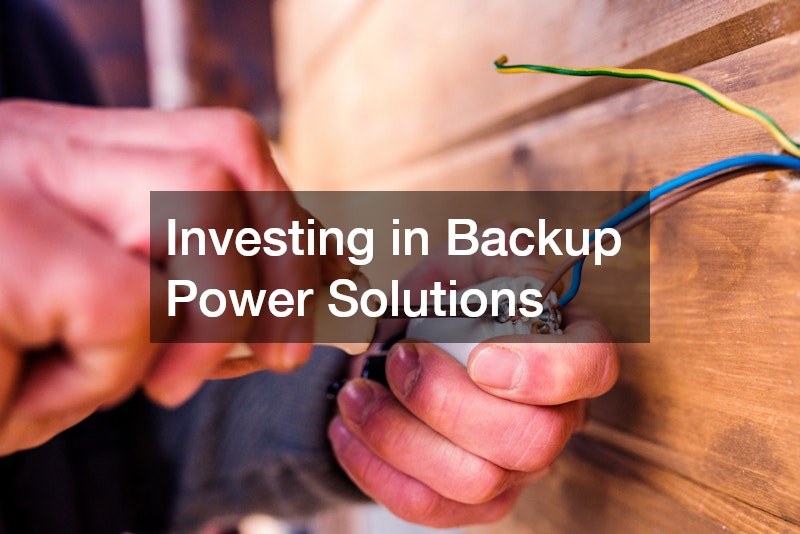Uninterrupted electricity supply is crucial for maintaining the rhythm of daily life. Whether it’s at home or in a commercial setting, unexpected power outages can lead to significant disruptions. Emergency electrical services become invaluable in such situations, ensuring that you have prompt access to solutions that can restore normalcy.
How to Respond When the Power Suddenly Goes Out
Identifying the Cause of the Outage
The first step in addressing a power outage is diagnosing its origin. Determine whether it’s an isolated issue by checking if the problem extends to neighbors or if it’s confined to your premises.
External factors like weather interruptions or utility maintenance might be responsible, while internal issues could include a tripped circuit breaker or a blown fuse.
Assessing these conditions will guide the appropriate response, be it resetting breakers or alerting utility providers. For internal issues, inspect the circuit breaker panel to see if any switches have flipped. Always remember safety first; avoid handling electrical components if you’re unsure of the procedures involved.
Understanding the root cause helps prevent unnecessary panic and saves time in addressing the issue. This process also aids technicians in quickly targeting the problem area once they arrive. Providing them with precise details can significantly shorten downtime and lead to faster restoration of power.
Immediate Safety Measures to Implement
Upon confirming a power outage, it’s paramount to initiate safety measures to protect both your home and its occupants. Turning off major appliances and electrical equipment should be a priority to prevent damage from power surges once electricity is restored. Ensuring emergency lighting, like flashlights or battery-operated lamps, is readily accessible can ease navigation in the dark.
Additionally, avoid lighting candles, which could pose a fire risk in cluttered environments. Check on vulnerable individuals, such as children or elderly family members, who may require additional assistance during a blackout. Communicating with family members and aligning on safety measures can prevent accidents and ensure everyone’s peace of mind.
Who to Call for Immediate Electrical Assistance
Choosing the Right Emergency Electrician
When seeking emergency electrical assistance, finding a competent and certified electrician is crucial. Research well in advance to identify professionals who come highly recommended and are licensed to manage electrical emergencies. Look for electricians with positive customer reviews and those who offer 24/7 service to ensure they are available when needed.
Ensuring the electrician offers insurance-backed services is equally important for your peace of mind. This documentation should confirm their ability to handle emergencies effectively and mitigate any potential liability issues. Requesting recommendations from friends or family members can also lead you to trustworthy service providers.
Understanding Service Charges and Response Times
It’s vital to understand the typical costs associated with emergency electrical services prior to engaging a professional. Rates may vary based on the complexity of the issue, the time of day, and the emergency electrician’s experience. Gathering quotes from multiple providers can help you benchmark reasonable pricing and avoid excessive charges.
Response times are another critical factor; a fast response can not only reduce downtime but also minimize risk. Most emergency services provide an estimated time of arrival, which can range from immediate dispatch to a few hours, depending on their schedule. Balancing cost with promptness is key to choosing the right service provider in an emergency.
Preventing Future Electrical Emergencies
Regular Maintenance and Inspection Tips
The adage “an ounce of prevention is worth a pound of cure” rings particularly true when it comes to electrical systems. Conducting regular inspections and maintenance on your home’s electrical system can significantly lower the risk of outages. This involves checking wiring integrity, ensuring outlets are functioning properly, and inspecting the circuit breaker box.
Scheduling routine maintenance by certified electricians provides expert oversight and keeps your systems updated to current safety standards. Developing a maintenance log helps track past issues and ensures regular upkeep, further reducing the likelihood of emergencies. Preventive measures today translate to fewer disruptions and safer home environments tomorrow.
Investing in Backup Power Solutions
Incorporating backup power solutions is a smart strategy to mitigate the impact of power outages. Investing in generators or uninterruptible power supplies (UPS) can sustain critical systems during power failures. Selecting the right backup power solution depends on factors like location, energy demands, and budget.
Standby generators offer seamless transitions during outages, with automatic activation when utility power fails. Meanwhile, UPS systems are ideal for protecting sensitive electronics and providing a buffer time before generator power kicks in. Consider the level of power autonomy needed to decide on a suitable backup solution.
Electricity is the backbone of modern living, and understanding how to respond to power outages is a requisite for everyone. This article aims to equip you with strategies to address such emergencies, from identifying causes, ensuring safety to reaching out to professional services. Implementing preventive measures and investing in backup power can further assure that you remain prepared for the unexpected.

